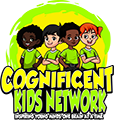Social skills don’t come naturally to everyone—especially during the tween and teen years. Between shifting friendships, changing emotions, and the rise of digital communication, many young people struggle to interpret social cues like tone of voice, body language, and facial expressions.
Learning to “read the room” is a key part of emotional intelligence—and it’s something that can be taught and practiced. When tweens and teens begin to recognize social signals more clearly, they’re able to connect more deeply with others, manage conflicts better, and feel more confident in social situations.
💬 What Are Social Cues?
Social cues are the subtle signals people use to communicate feelings, thoughts, and intentions. These can include:
-
Facial expressions (smiling, frowning, raising eyebrows)
-
Body language (crossed arms, leaning in, turning away)
-
Tone of voice (sarcasm, excitement, frustration)
-
Personal space (standing too close or too far)
-
Eye contact (looking away or staring too long)
Understanding these cues helps kids figure out how others are feeling—even when words aren’t used.
😕 Why Tweens & Teens Struggle With Social Cues
During adolescence, social awareness becomes more complex. Many tweens and teens start to feel self-conscious or overthink social interactions, which can make it harder to pick up on nonverbal signals.
Some factors that make it even trickier include:
-
Anxiety or shyness, which can make kids withdraw or misinterpret signals.
-
Digital communication, where emojis replace expressions and tone is easy to misread.
-
Neurodiversity, such as ADHD or autism, where interpreting social subtleties may require extra support.
🧩 How to Help Your Tween or Teen Build Social Cue Awareness
Here are a few strategies parents, educators, and counselors can use:
-
Model social awareness. Talk out loud about what you notice (“She looked away when you interrupted—what do you think that means?”).
-
Watch movies or shows together. Pause and ask what a character might be thinking or feeling based on their body language.
-
Use visual aids and practice worksheets. Role-play common scenarios like group work, joining conversations, or resolving conflict.
-
Encourage self-reflection. Have your teen identify how their body language or tone affects others.
-
Reinforce small wins. Celebrate progress when they use good eye contact, respond appropriately, or pick up on a social signal they might have missed before.
📝 Practice Makes Progress
To make this learning fun and engaging, we created the Understanding Social Cues Worksheet for Tweens & Teens — a printable micro-learning activity set designed to help kids build confidence in reading and responding to social signals.
It includes:
✅ Real-life social scenarios
✅ Visuals that teach body language and tone recognition
✅ Reflection prompts and conversation starters
✅ A mini “social cue check-in” tracker
👉 Click here to get your Understanding Social Cues Worksheet for Tweens & Teens.
Help your child strengthen friendships, improve communication, and boost empathy—one social cue at a time.
💡 Final Thought
Learning social cues isn’t about “fitting in” " ;it’s about building empathy and awareness. When tweens and teens learn to recognize what others feel and how their actions affect people around them, they grow into more emotionally intelligent, compassionate young adults.
Let’s help our kids not just hear what others say; but truly understand what others mean.


